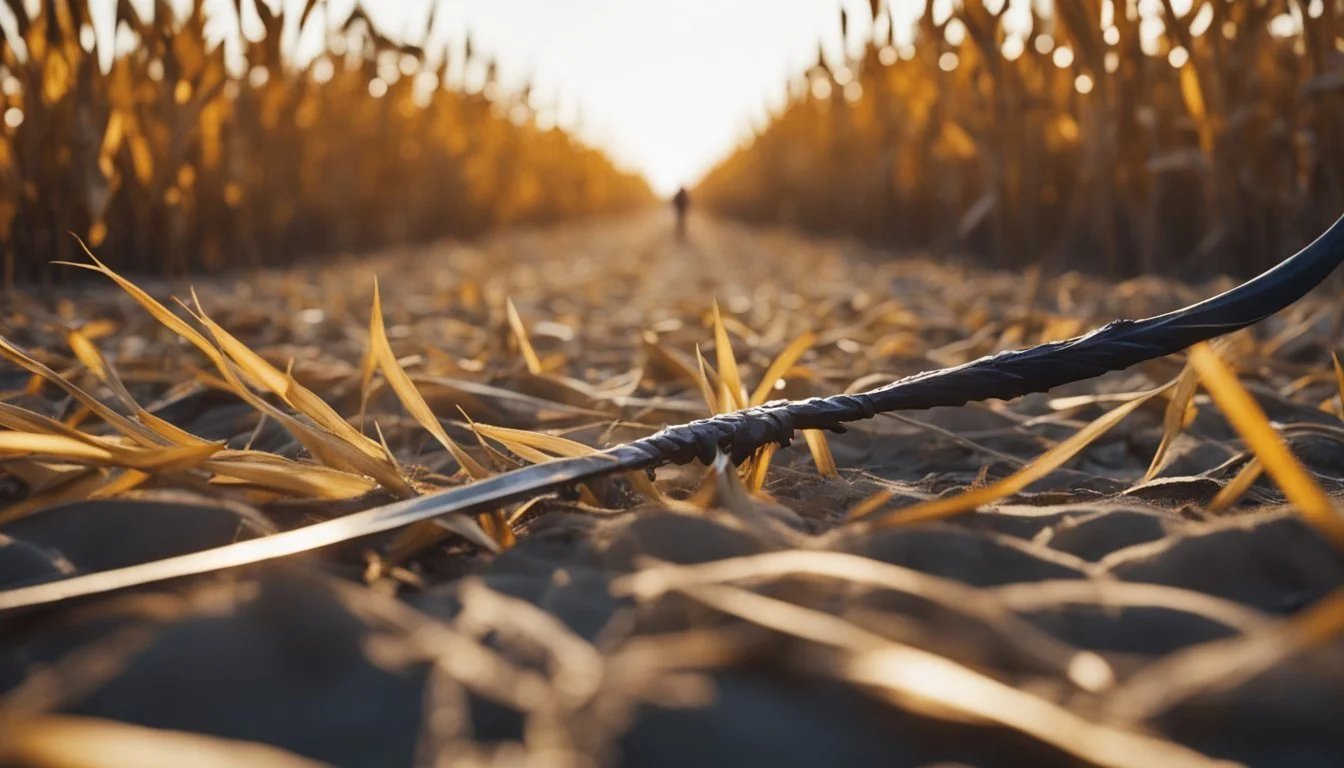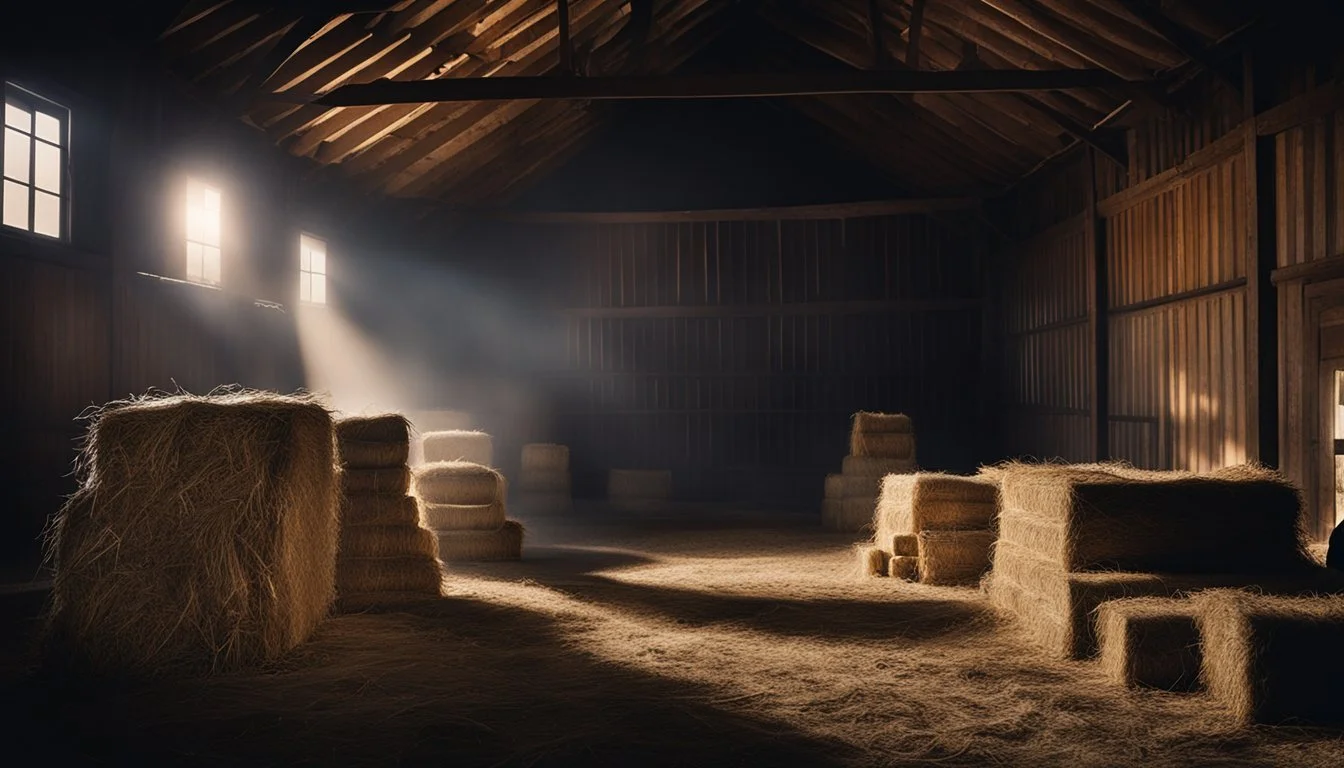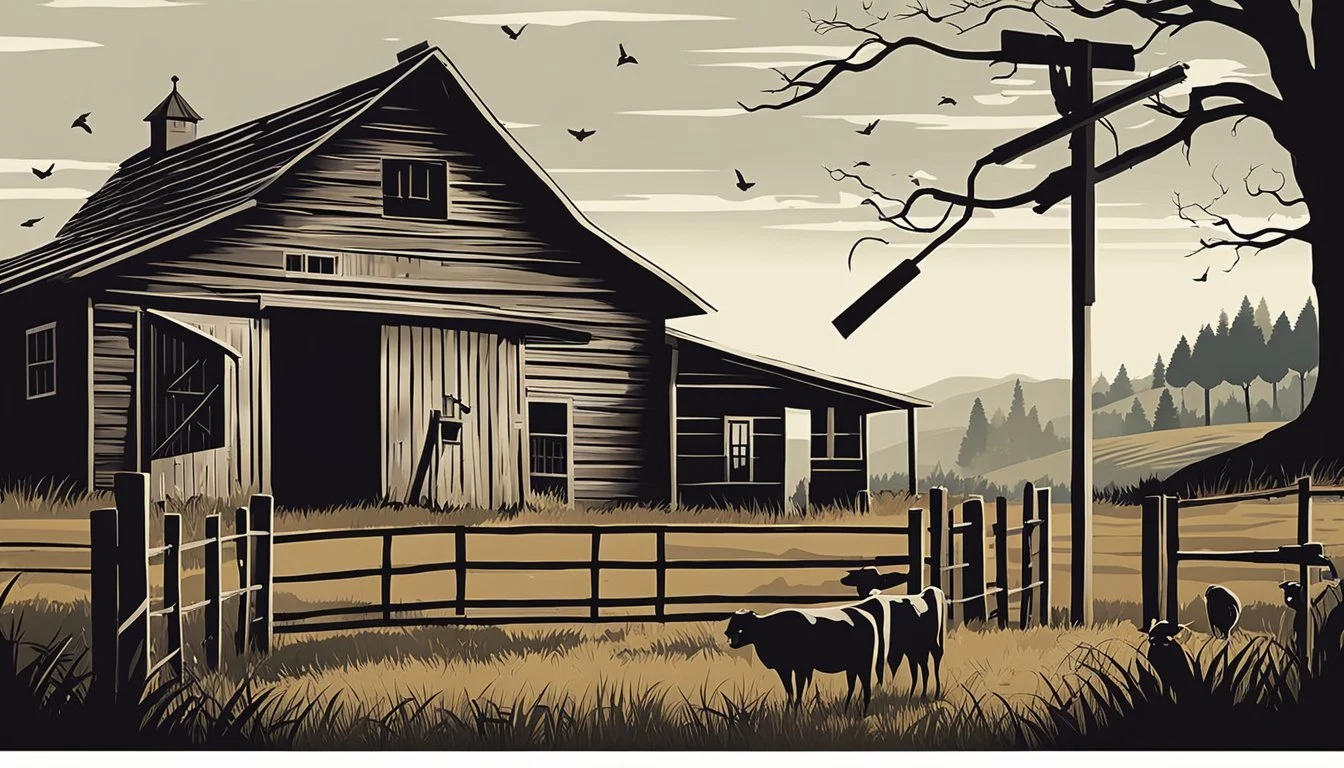5 True Crime Documentaries About Farmers
Rural Mysteries Exposed
True crime documentaries often capture the darker facets of human nature, unraveling intriguing stories that grip audiences worldwide. While many true crime narratives focus on urban settings, there exists a compelling genre focused on rural and agricultural crimes. These documentaries shed light on the lesser-known but equally captivating crimes that occur within farming communities.
Such films and series provide a unique perspective on crime, exploring cases that might not typically make headlines but offer profound insights into human behavior and societal issues. From brutal family murders to unconventional agricultural offenses, these stories reveal a hidden side of rural life where the stakes are just as high and the mysteries just as deep.
1) Murder in the Cornfield (2021)
The documentary "Murder in the Cornfield" provides a gripping look at a shocking crime in a rural farming community. In 2018, the quiet town of Prairieville was left in disbelief when a local farmer, John Peterson, was found dead in his cornfield.
The investigation quickly revealed a tangled web of secrets. Peterson, a well-respected community member, had been involved in a bitter land dispute with a neighbor. This conflict is believed to have played a significant role in the murder.
Detectives discovered crucial evidence hidden in the tall corn stalks, which eventually led to the arrest of Peterson's neighbor. The documentary follows the intense legal battle that ensued, shedding light on the deep-rooted tensions within the farming community.
"Murder in the Cornfield" combines interviews with local residents, expert commentary, and dramatic reenactments to paint a vivid picture of the case. It offers viewers a rare glimpse into the lives of those affected by the crime and the long-lasting impact on the community.
2) The Farmer's Dark Secret
"The Bambers: Murder At The Farm" (2021) delves into the tragic story of a family murdered on a farm in the UK. Three generations lost their lives in this horrendous crime. Jeremy Bamber, a member of the family, was convicted of the murders but has maintained his innocence for over three decades.
This documentary revisits the events of 1986, shedding light on the details that led to Bamber's conviction. Viewers are taken through the investigation, court proceedings, and the lingering questions surrounding the case. It paints a grim picture of the twisted paths some lives can take, even in the serene setting of a farm.
The series dives deep into the evidence, witness statements, and various theories that have emerged over the years. It's a compelling watch for anyone interested in true crime, especially cases that revolve around family dynamics and rural settings. The case's complexity and the ongoing debates about Bamber's guilt or innocence keep the viewer engaged.
For more information on "The Bambers: Murder At The Farm," visit IMDB.
3) Secrets of the Barn
"Secrets of the Barn" (2019) offers a unique glimpse into the life of a seemingly normal farming family whose idyllic existence conceals dark secrets.
This documentary delves into the mysterious disappearances of farm workers which have baffled the local community for years. The police uncover a hidden network of illegal activities taking place beneath the barn's roof.
Viewers are taken on a journey through interviews with locals and law enforcement, shedding light on the events leading up to a chilling discovery. The film gradually reveals how the barn's once constructive role is twisted into a setting of secrecy and crime.
The narrative combines the rustic atmosphere of the countryside with the unnerving aspects of the criminal underworld. This duality is a central theme throughout the documentary, maintaining a gripping tension that captivates audiences.
The authenticity of the people interviewed adds a layer of credibility, making the revelations all the more startling. It showcases how quiet rural areas can sometimes hide the most unexpected and dramatic stories.
For more information on this film, visit the IMDb page.
4) The Harvest Slayings
The Harvest Slayings (2018) is a gripping documentary set in the quiet farming community of Winston County. This haunting piece explores the shocking murder spree by a local farmer, John Whitman.
Whitman, known for his reclusive nature, went on a violent rampage that left five neighbors dead. The documentary delves into his troubled past, examining the pressures and isolation he faced.
Through interviews with law enforcement, friends, and survivors, the film uncovers the chilling details behind Whitman's actions. It paints a vivid picture of a community in shock, grappling with unexpected violence.
For more information, visit the IMDb page: The Harvest Slayings (2018) on IMDb.
5) Blood on the Farm (1992)
"Blood on the Farm" explores the harrowing death of a rural cow farmer in Upstate New York. The film, released in 1992, unfolds the gripping story of the trial that ensued. This true crime documentary brings to light the complexities of rural life intertwined with a tragic event, providing a raw glimpse into the lives affected.
The documentary doesn't rely on dramatic twists, but rather presents the events as they unfold, lending it a sense of authenticity. It delves into the community's response and the impact of the trial on the individuals involved.
"Blood on the Farm" offers a unique perspective by focusing on the human side of the story, making it a poignant entry in the true crime genre. This approach helps viewers understand the broader implications of the crime within a tight-knit community.
For more information, visit IMDb.
Historical Context of Rural Crime
Crime in rural communities has evolved over time, influenced by both historical events and changes in socioeconomic conditions. Understanding these elements sheds light on how rural crime has shaped and been shaped by agricultural life.
Evolution of Crime in Agricultural Communities
Early agricultural communities faced crimes such as livestock theft and crop destruction. These acts were often committed by local inhabitants or transient workers seeking to survive harsh economic conditions.
As farming techniques and technologies advanced, new types of crimes emerged. For example, machinery theft became common, reflecting the increasing value and sophistication of farm equipment.
By the mid-20th century, organized crime began to target rural areas, exploiting the isolation of farms. This period saw a rise in systematic theft and even drug trafficking operations using farmlands.
Socioeconomic Impact on Farming Communities
Economic instability and fluctuations in market prices often lead to spikes in rural crime. Farmers struggling to make ends meet might resort to unlawful activities as a means of survival.
Poverty in many agricultural regions resulted in higher crime rates, with some communities developing reputations for specific criminal activities. For example, areas hard-hit by droughts often experienced increased incidences of theft and fraud.
Government policies and subsidies also played a role. Programs intended to support farmers sometimes had unintended consequences, leading to fraudulent claims and misuse of funds.
Understanding these dynamics offers insights into how rural crime is intrinsically linked to the broader economic conditions and social fabric of agricultural communities.
Common Motives Behind Farming-Related Crimes
Farming-related crimes often stem from economic stressors and territorial conflicts. The following sections detail the financial pressures and property disputes that can lead to criminal behavior in agricultural communities.
Financial Pressures and Debt
Farmers frequently face significant financial challenges. Market fluctuations, high operational costs, and unpredictable weather can lead to substantial debt. When income fails to cover expenses, some may resort to illegal activities to stay afloat.
Examples of financial pressures that lead to crime include:
Theft of livestock or equipment to sell for quick cash.
Insurance fraud by destroying crops or property to claim compensation.
Illegal crop production, such as growing unregulated or higher-value plants, to maximize profits.
This financial strain can push individuals towards desperate measures, creating ripe conditions for various criminal activities within the agricultural sector.
Property Disputes
Territorial disputes are another common motive behind farming-related crimes. Land is a crucial asset for farming, and conflicts over boundaries, ownership, or usage rights can escalate into criminal acts.
Types of property-related crimes include:
Vandalism of competing farms to sabotage their operations.
Trespassing to use another's land illegally for cultivation or grazing.
Arson targeting property to force land sales or settle grudges.
These disputes can lead to long-standing feuds, with acts of retribution perpetuating cycles of criminal behavior within the farming community.







